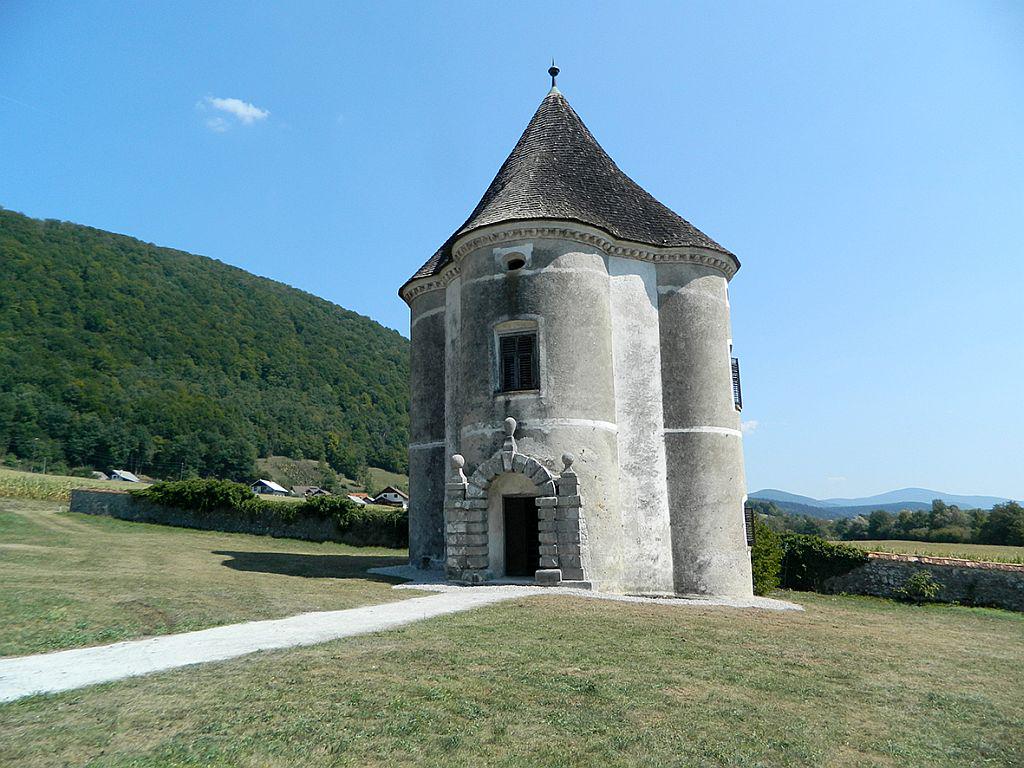
According to local legend one of the noblemen who occupied the castle in feudal times demanded extortionate taxes from his underlings. The peasants were not able to come up with the money because of a poor harvest, so they were forced to hand over their daughters to the nobleman. He would then rape them in his tower, causing the villagers to refer to the hated pavilion as the Devil’s Tower.
Regardless of the story’s origins, the building was long associated with parties and sin. In fact, the tower’s otherworldly appearance is still evident in its interior. The walls are covered by 17th century frescoes that feature magical trompe-l'œil illusions – giving the impression of three dimensions on a flat surface. The work of the Dutch master Almanach, the frescoes portray Zeus’ abduction of Ganymede, allegorical figures representing faith, hope, and love, as well as numerous fountains and columns.
For many years, the path from the castle to the tower passed beneath three stone portals. However, the Soteska Castle, a magnificent structure that at one time even contained a brewery, was burned down by the Partisan guerillas during World War II, although the Devil’s Tower was spared.
Today, its mysterious stories live on. It is now a popular venue for concerts because of its unusually good -- almost otherworldly – acoustics. And several times a year, weddings are held in the tower, a throwback to the era when nobles organized parties in their mysterious garden pavilion.

































































